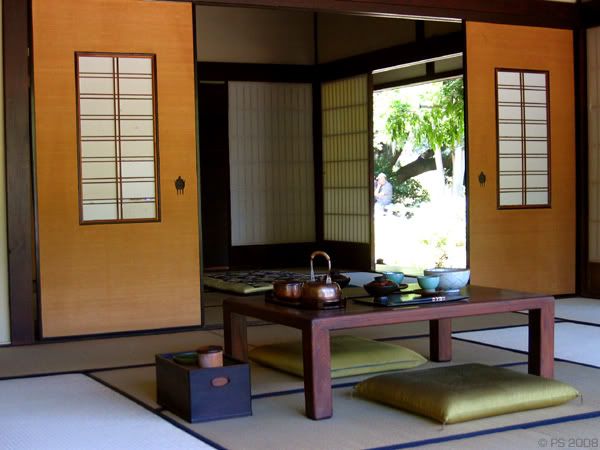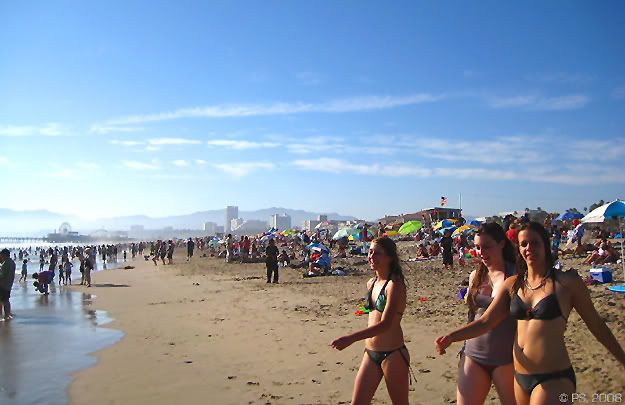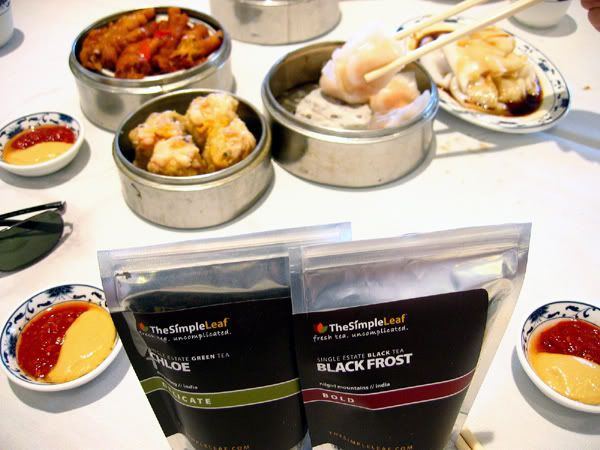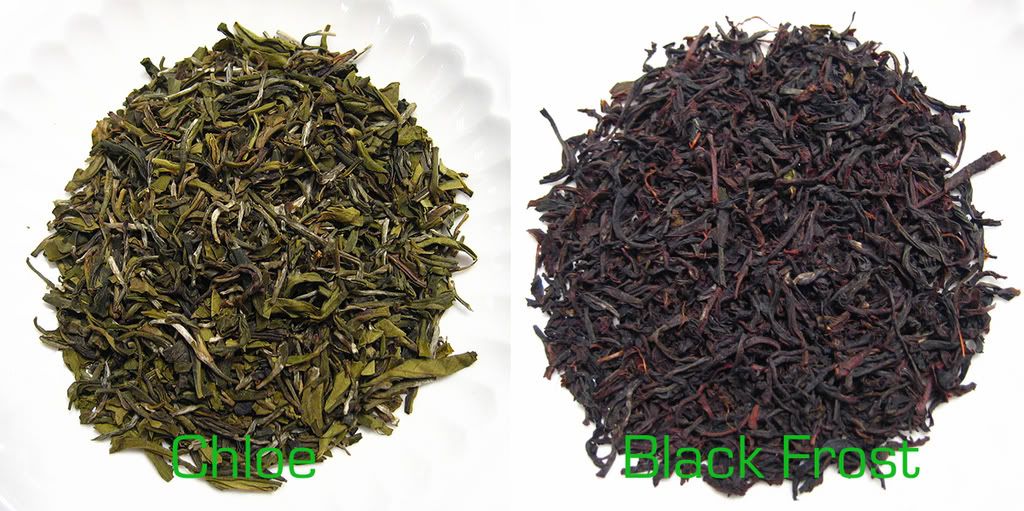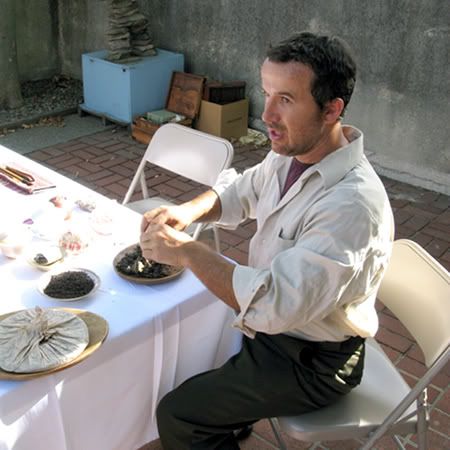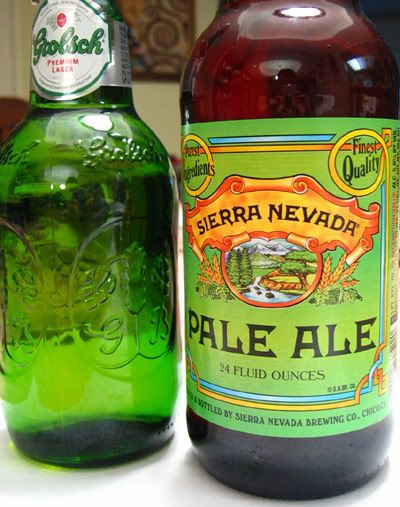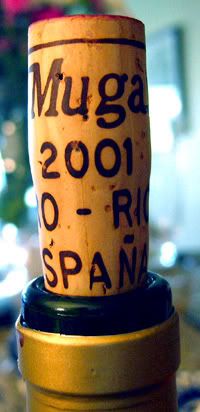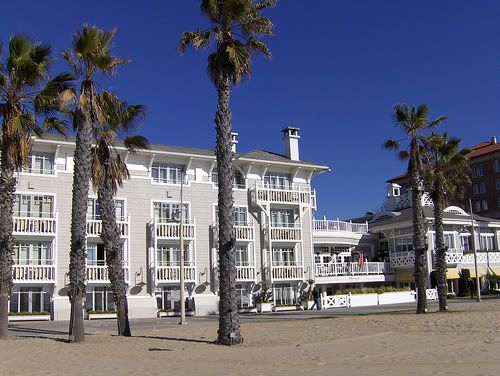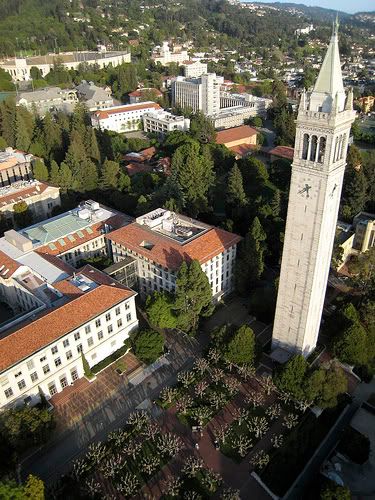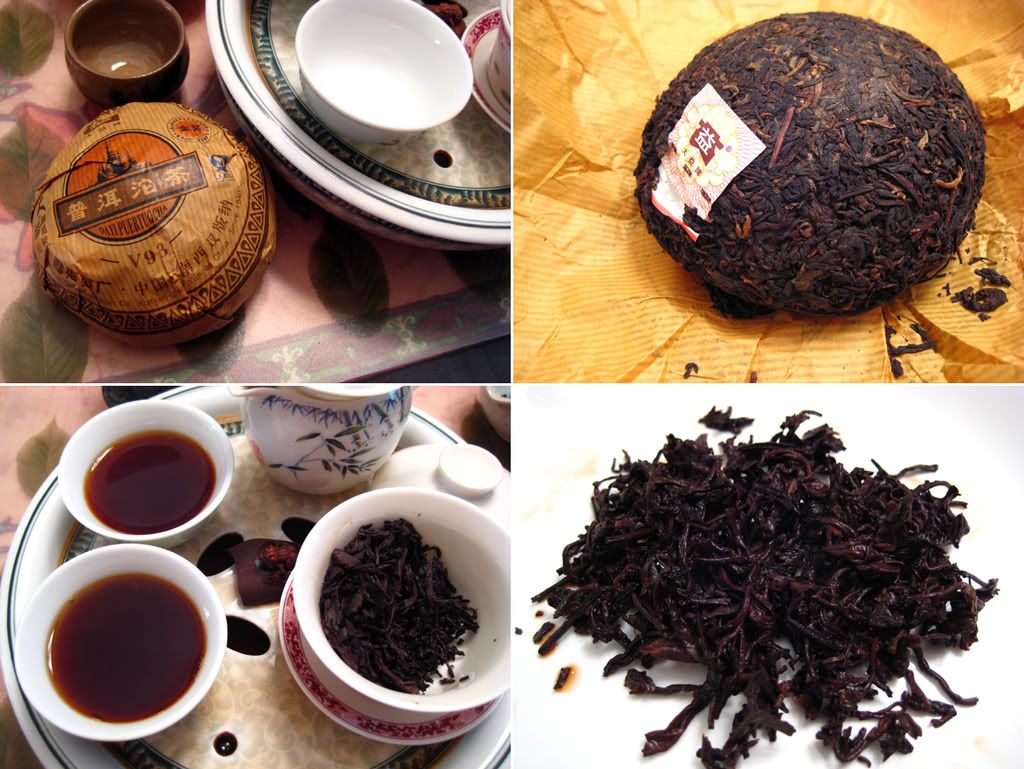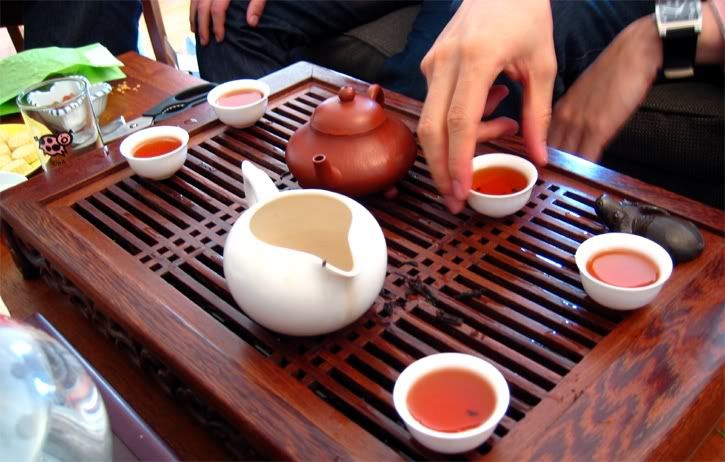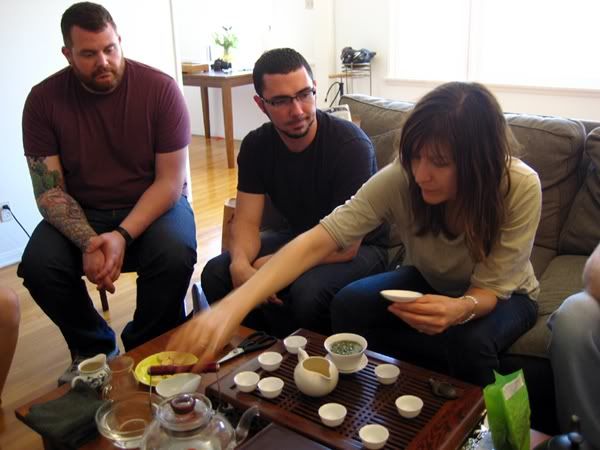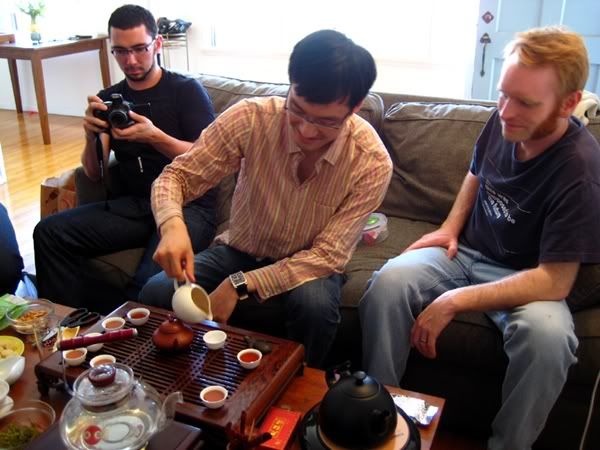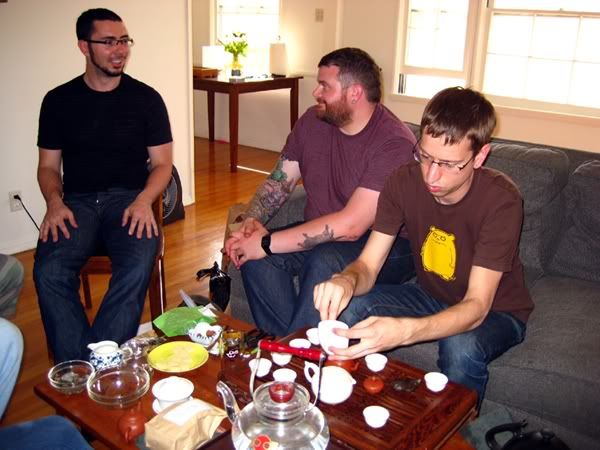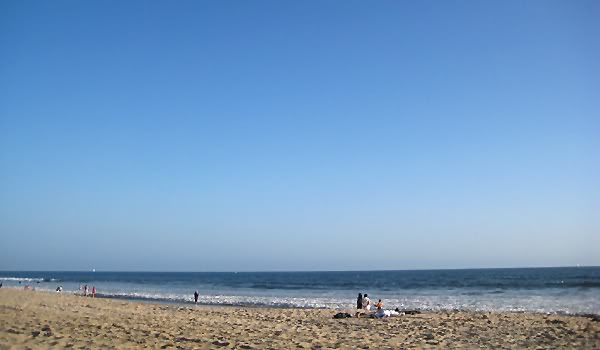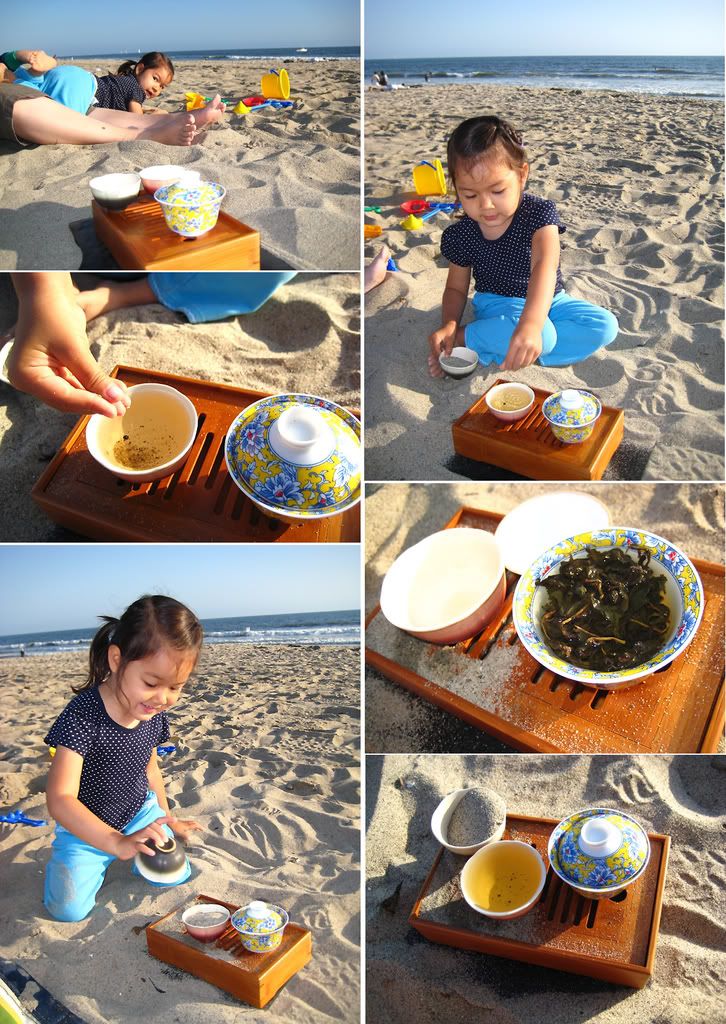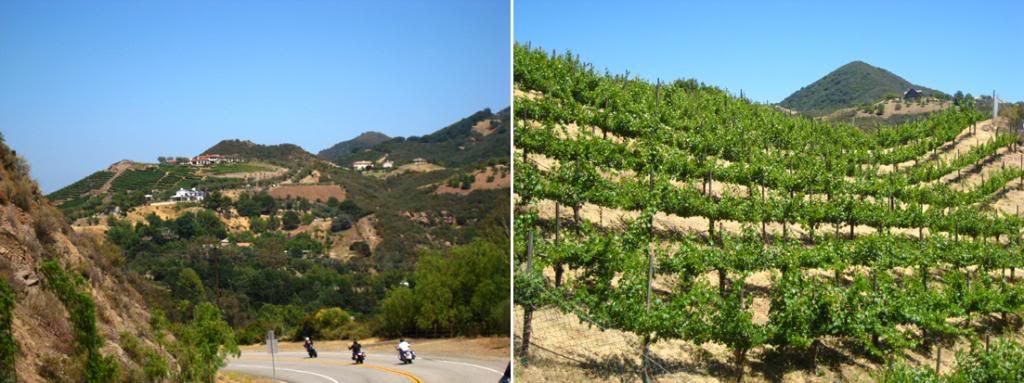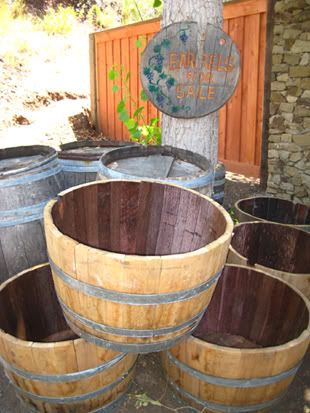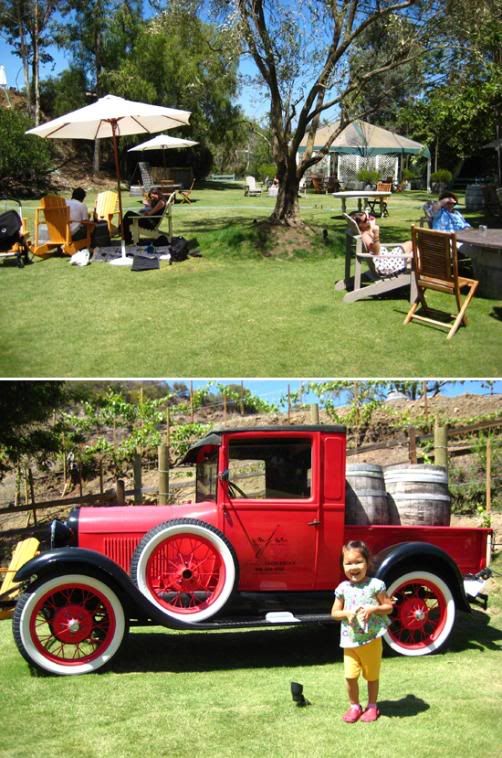This tea sample came from The Tea Gallery in New York City, a brick-and-mortar tea store which only recently inaugurated its online store. Congratulations! We in the tea blogosphere have known about this establishment for quite some time as the quasi-headquarter of New York City's teaheads, such as Toki.
I must generously give my thanks to Dae, of The Tea Gallery, who was most courteous and patient with this first-time customer’s incessant questioning about the shu pu’er at hand (we had a lengthy, multiple exchanges of emails due to our confusion with another shu tuocha).
On to the tea.
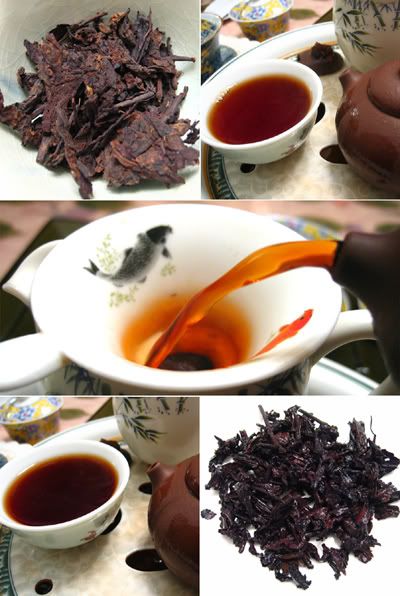 Dry: decent-sized leaves with lots of stalks in the mix. Earthy-red-and-black in color, with a clean appearance and absent of mold or any hint of it. It gave off a fresh, clean, woody smell. One could see (and smell) that the tea went through the pre-requisite wo dui process to have been classified as a shu, but perhaps not all the way through. Also, it was apparent that this 10-year old tea had been well-stored.
Dry: decent-sized leaves with lots of stalks in the mix. Earthy-red-and-black in color, with a clean appearance and absent of mold or any hint of it. It gave off a fresh, clean, woody smell. One could see (and smell) that the tea went through the pre-requisite wo dui process to have been classified as a shu, but perhaps not all the way through. Also, it was apparent that this 10-year old tea had been well-stored.Brewing parameter: 1/3 full of dry leaves in a 125ml Yixing pot. Mineral water, boiling-hot temperature, 5 sec. wash, 30 sec. rest. 10s, 15s, 30s, 45s, 1m, 2m…then brewed with warm water for 4 hours.
Liquor: clean-tasting, thick body, pleasantly woody, and smooth. The first 2 infusions had some silky-smooth astringency (from the stalks?), but this characteristic dissipated thereafter to give a pristine mouthfeel. There was hardly any fault with this shu pu’er, though in itself was quite ordinarily pleasant. Its taste profile hardly changed from one infusion to another. Lasted for about 6 - 7 infusions.
Overall: a thoroughly pleasant and faultless shu tuocha pu’er, if rather charmingly ordinary and straightforward. I have no complain about this tea. I enjoyed drinking it.
3.5 stars (good / very good)
On another note...today I visited the various gardens at The Huntington Library in San Marino. Below is a snapshot of the tearoom in the Japanese Garden.
